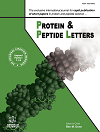
Full text loading...
We use cookies to track usage and preferences.I Understand
The Disintegrin and Metalloproteinase (ADAM) family, also known as the metalloproteinase/disintegrin/cysteine-rich (MDC) proteins, includes both secreted and transmembrane molecules involved in critical biological processes, such as cell migration, adhesion, and signaling. This study aimed to investigate the evolutionary relationships and structural characteristics of disintegrin and metalloproteinase proteins identified in the venom gland transcriptome of the scorpion Hemiscorpius lepturus.
Using bioinformatics tools, we analyzed the open reading frame, conserved motifs, and primary, secondary, and tertiary structures of these proteins. Five proteins, named HLDisMet1, HLDisMet2, HLDisMet3, HLDisMet4, and HLDisMet5, were identified. Their predicted 3-D structures were within normal ranges (Z-score between -4 to -9).
Phylogenetic analysis revealed that HLDisMet1 shares similarities with proteins from various spider species (Nephila pilipes, Argiope bruennichi, Araneus ventricosus, and Trichonephila inaurata madagascariensis), HLDisMet2 with the scorpion Centruroides sculpturatus, HLDisMet4 with the scorpion Tityus serrulatus, and HLDisMet5 with several snake species (Python bivittatus, Vipera anatolica senliki, Protobothrops mucrosquamatus, and Naja naja).
These findings highlight the significant similarities between HLDisMet proteins and those found in other venomous species, suggesting a complex and diverse evolutionary pathway for venom components. The cross-species conservation observed may indicate a convergent evolutionary strategy, where different species independently develop similar venom components to adapt to similar ecological niches or prey types. This study highlights the evolutionary significance of venom diversification and its potential applications in understanding venom biology across different species.

Article metrics loading...

Full text loading...
References


Data & Media loading...

